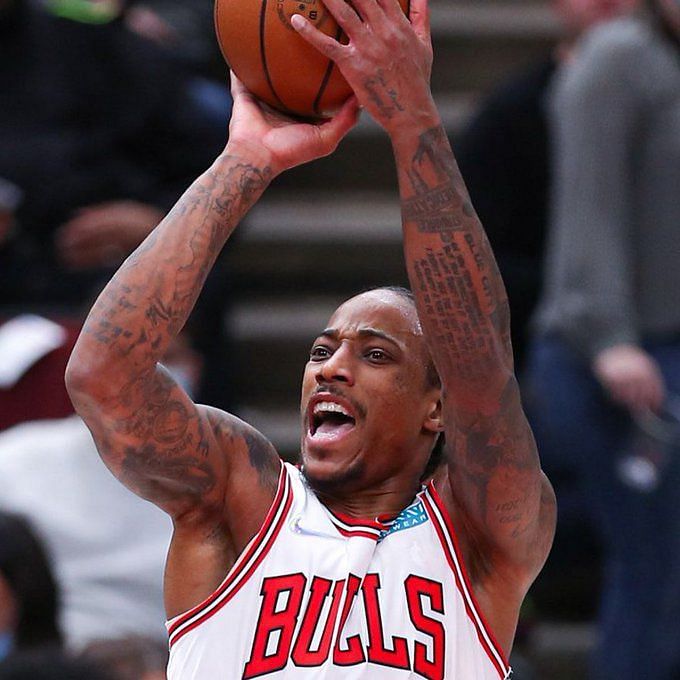
Stephen Curry & the NBA's 3-point revolution

The popular opinion among NBA fans is that this year's All-Star Weekend was a bit of a mixed bag in terms of entertainment value.
The skills competition featured arguably the worst dunk contest in the league's history, and a 6-foot-11 center won the Three-Point Contest.
However, the All-Star game itself featured a dazzling performance from Stephen Curry. He made 16 3-pointers, shattering the previous All-Star game record of 9, held by Paul George.
Unfortunately, Curry ran out of steam as the opposition began to double-team him, limiting him to just one 3-pointer made in the fourth quarter.
Regardless, the 2022 NBA All-Star weekend showed how drastically professional basketball has changed.
The beginning of the NBA's 3-point Era

The consensus among fans is that Stephen Curry is the pioneer of the NBA's 3-point revolution. The exact timeframe in which his impact on league became apparent, however, is a more nuanced debate.
Many would point to Curry's 54 point game against the New York Knicks in 2013 as the beginning of the 3-point era. Possibly a more popular opinion is that the 3-point revolution began during Curry's historic 2015-16 season.
The latter opinion provides a more compelling argument.
In the 2014-15 NBA season, Kobe Bryant, Tim Duncan, and Kevin Garnett retired. Their departure from the game marked a passing of the torch as the final three stars of the early 2000s brand of basketball left the game.
This season also featured the rise of the Golden State Warriors. Stephen Curry won the MVP award, and the Warriors emerged victorious over the Cleveland Cavaliers to win the franchise's first championship since 1975.
The 2014-15 championship gave rise to a new era of basketball that relied heavily on stretching the floor and moving the ball. This play style was a stark contrast to the pick-and-roll heavy basketball of prior eras.
However, it still took the league a few years for the league to adapt to the idea of weaponizing the 3-point shot.
The 2015-16 Golden State Warriors took the 3-point revolution to new heights. They won a record-breaking 73 games in the regular season, surpassing the 1995-96 Michael Jordan-led Chicago Bulls for the most wins in a single season.
Individually, Curry used his otherworldly 3-point shooting ability to score at a prolific rate.
He made 402 3-pointers in the regular season, a record that stands to this day, on his way to scoring 30 points per game. He posted shooting splits of 50% from the field, 45% from 3-point range and 91% from the free-throw line.
Between the 2011-12 NBA season and the 2015-16 NBA season, the top 15 teams (by 3PA) averaged 24 3-point attempts per game. Between the 2016-17 and 2020-21 seasons, the top 15 teams averaged 34 3-point attempts per game.
While the number of attempts has increased considerably over the past decade, the average 3-point shooting percentage has not.
Between the 2011-12 and 2015-16 NBA seasons, the top 15 teams (by 3PA) posted an average 3P% of 35.8%. For the other half of the decade, the top 15 teams posted an average 3P% of 36.1%.
The statistics tell us that, while Stephen Curry has encouraged the league to take more 3-point shots, no one has been able to match his efficiency.
The 3-point revolution is often criticized for taking the league away from the rim and ruining the game's diversity. These critics may have a point as the league is taking 3-pointers at a far greater volume, but without any improvement in average shot quality.
This begs the question, what will influence the next evolution of NBA basketball?
The mid range brings Balance
Surprisingly, the 3-point revolution did little to deter the league's most prolific mid range scorers from taking their bread and butter shots.
From the 2010-11 NBA season to the 2014-15 NBA season, Kevin Durant took 5.3 3PA per game while shooting 39%. From the 2015-16 NBA season to the 2020-21 NBA season, Durant took 5.6 3PA per game while shooting 39.7%.
When comparing those two time frames, Durant's FGA per game dropped by just 1.5 attempts on average, from 19.3 FGA per game to 17.8 FGA per game. This indicates that, while a higher ratio of his shots were 3-pointers, his game didn't change drastically.
DeMar DeRozan, during the first half of the decade, took 1.6 3PA per game while shooting 24.6% from behind the arc. During the second half of the decade, he took 1.6 3PA per game on a slightly improved 26.5% from behind the arc.
To give reference, DeRozan's average FGA per game actually rose from 15.5 FGA to 17.4 FGA. That's an increase of 1.9 FGA per game without change to the volume of 3-pointers taken.
Both DeRozan and Durant remain virtually unaffected by the 3-point explosion and are still two of the best scorers in the league.
Super-stars like Chris Paul, Giannis Antetokounmpo and Nikola Jokic, to name a few other examples, have continued to base their scoring approach around their mid range proficiency.
Legacy
The 3-point revolution, spearheaded by Curry, is how the game naturally evolved. When Julius Erving scooped a lay-up around the rim in the 1980s, people were witnessing something unprecedented.
Hakeem Olajuwon then paved the way for more advanced post-moves, which would serve as the precursor to post-dominant play for years to come.
In a similar fashion, the range and efficiency that Curry displayed influenced the rise of other perimeter centric stars, such as Damian Lillard and Trae Young.
To say Steph ruined the game would undermine his legacy. Curry has simply, as Shaquille O'Neal would say, made the game more accessible for the "little people."
